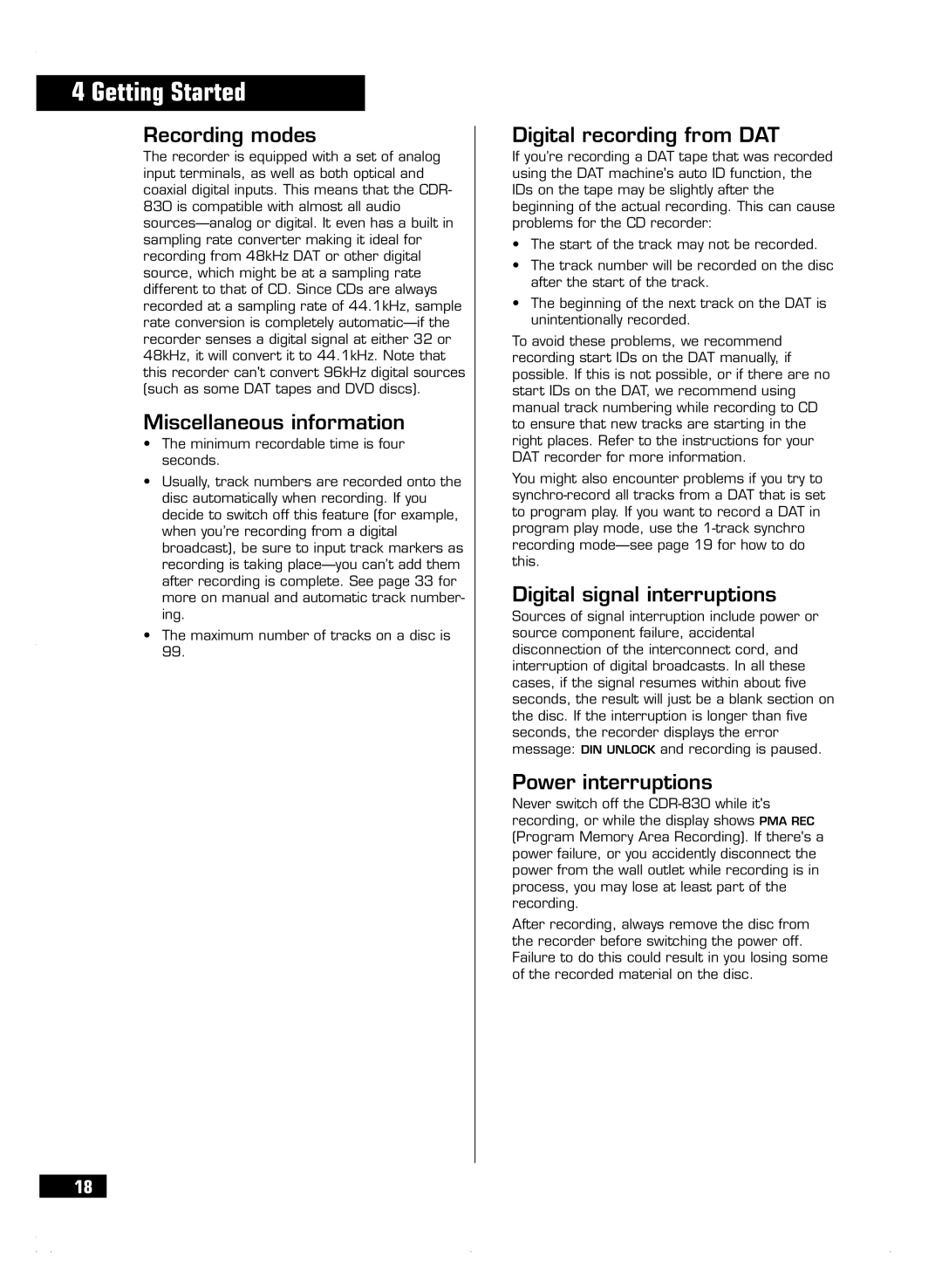
Recording modes
The recorder is equipped with a set of analog input terminals, as well as both optical and coaxial digital inputs. This means that the CDR- 830 is compatible with almost all audio
Miscellaneous information
•The minimum recordable time is four seconds.
•Usually, track numbers are recorded onto the disc automatically when recording. If you decide to switch off this feature (for example, when you’re recording from a digital broadcast), be sure to input track markers as recording is taking
•The maximum number of tracks on a disc is 99.
Digital recording from DAT
If you’re recording a DAT tape that was recorded using the DAT machine's auto ID function, the IDs on the tape may be slightly after the beginning of the actual recording. This can cause problems for the CD recorder:
•The start of the track may not be recorded.
•The track number will be recorded on the disc after the start of the track.
•The beginning of the next track on the DAT is unintentionally recorded.
To avoid these problems, we recommend recording start IDs on the DAT manually, if possible. If this is not possible, or if there are no start IDs on the DAT, we recommend using manual track numbering while recording to CD to ensure that new tracks are starting in the right places. Refer to the instructions for your DAT recorder for more information.
You might also encounter problems if you try to
Digital signal interruptions
Sources of signal interruption include power or source component failure, accidental disconnection of the interconnect cord, and interruption of digital broadcasts. In all these cases, if the signal resumes within about five seconds, the result will just be a blank section on the disc. If the interruption is longer than five seconds, the recorder displays the error message: DIN UNLOCK and recording is paused.
Power interruptions
Never switch off the
After recording, always remove the disc from the recorder before switching the power off. Failure to do this could result in you losing some of the recorded material on the disc.
18
